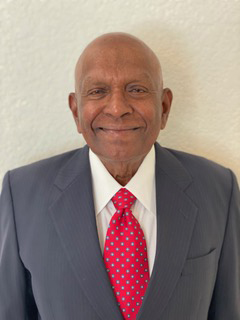
DRUG ADDICTION

The Center for Disease Control (CDC) in their report on Sept. 13, 2023, stated that 111,000 people had died from drug overdose during the previous 12 months in the country. If we look at it differently, there were 304 deaths per day or 12 deaths every hour, or one drug overdose death every five minutes!
Drug addiction and drug overdose are quiet killers that receive no publicity. Drug addiction is a crisis for the nation, but the impact is personal for the victim and family. When people die one by one, there is little attention given.
Why is this happening in USA and not so much in other countries? There is a high demand for them here with easy availability and affordability. The law enforcement system is stretched, and punitive damages are minimal. Porous borders and sophisticated drug cartels allow inflow of the drugs. Societal structures are loose and culture is permissive. Political willpower and funding are lacking to combat the drug epidemic and educate the public.
What is an addiction? An addiction is the inability to stop using a substance or engaging in a behavior, despite knowing the ill effects or negative consequences. The reward center in the brain gives them an exhilarating experience with the release of certain happy hormones and addicts look forward to the pleasurable hyperarousal again and again.
Craving can manifest as addictive behaviors or addictive substance abuse. Addictive behaviors can be harmless or risky. An example of low-risk addictive behavior is competitive sporting activities, where winning uplifts the mood. Examples of risky addictive behaviors are race car driving, paragliding or deep-sea diving. Gambling can cause financial ruin and result in substance abuse. Engaging in activities such as card games, sex, or shop lifting can be compulsive. Obesity from overeating is another type of compulsive behavior.
A more serious problem is dependence on substances. Alcohol and tobacco are well-known to be addictive and harmful. Excessive use of alcohol can cause damage to liver, resulting in cirrhosis of liver, fluid accumulation in the abdomen, vomiting of blood, malnutrition and eventual death. Excessive tobacco use in any form can cause lung and throat cancers, asthma and various breathing disorders secondary to lung damage.
Marijuana has become more commonly available for medical or recreational use in many states. Despite some of the medical benefits claimed and short-term relaxation and euphoria, long-term usage can cause mental and cognitive disorders, memory loss, anxiety disorders, early onset of dementia and motor function deficits.
Several pain medications are initially used for pain control, which subsequently lead to dependence, increasing tolerance and addiction. Examples are morphine, Demerol, codeine containing medications such as oxycodone, hydrocodone, Tylenol with codeine and tramadol. These are initially prescribed by physicians for pain management. Patients demand more of the same medication as their tolerance increases, requiring higher dosages. When they are no longer available from the physician, patients start seeking the meds from any available source such as pain clinics or from illegal vendors.
Illegal street narcotics include heroine, cocaine, fentanyl and phencyclidine (PCP). These are highly addictive agents that give immediate euphoria, excitement, happiness, laughter, floating sensation, heightened energy and relaxation. When the effect wears off, they become depressed, anxious, violent, and fatigued with a sense of crashing. Craving for more of the drug becomes intense. Unknowingly overdose occurs leading to respiratory failure, coma and heart failure resulting in death. In addition, injection of street drugs causes variety of medical complications such as HIV/AIDS, hepatitis, clotting of veins, and large open ulcers and wounds.
These addictive drugs have increasing tolerance levels. The person not only demands the substance frequently, but in increasing quantity. When they cannot get the substance, they develop withdrawal symptoms. Such withdrawal symptoms can be dangerous and include crushing depression, panic attacks, violent behavior, twitching and burning sensation of extremities, sleeplessness, vomiting, anger, crying, emotional outbursts, fighting and suicidal attempts. They start secretive plans to obtain supply of the substance ahead of time by whatever methods. It becomes a vicious cycle.
What can we do and how can we prevent drug addiction? There is no single solution. But the effort must come from every member of society – parents, family members, teachers, schools, churches and the individual too. Many teenagers under peer pressure are tempted to try it out of curiosity. Often the family structure is broken, and one of the parents may be using it. Public health education on avoidance drugs and dangers of drug addiction is needed.
What to do once someone has already become an addict? This again must be a concerted effort between the individual, family and society. The person must be determined to come out of the dark hole. Often, there is no simple remedy or medication. Detoxification medications and protocols are available. Empathy and support are needed with diet, psychological support, encouraging mental and physical activity and getting rehabilitation services.
Drug addiction is a major curse in American society. In addition to death and diseases, drug addiction is a major drag on the economy and healthcare system. Care of patients with drug overdose and complications is expensive. The person becomes non-productive at the workplace, with absenteeism, poor performance and family disruption.
It is up to every citizen to be alert and discourage drug addiction from happening in their homes, neighborhoods and among the circle of friends. It is a scourge that must be nipped. It is for us to keep saying “No to drugs.”Dr. Venkit S. Iyer, MD, FACS, is a retired General and Vascular Surgeon. He has authored four books – “Decision making in clinical surgery,” “Aging well and reaching beyond,” “The Clinic” and “Geriatrics Handbook.” They are available through Amazon or from the author. His website venkitiyer.com has necessary links and contact information.
Editor’s Note: Khaas Baat sincerely thanks Dr. Ravindra Nathan for his valuablecontributions through his monthly health column starting with our first year of publication.
EYE CARE
Diwali Eye Safety: Protecting Sight during the Festival of Lights

As the enchanting festival of Diwali approaches, the vibrant celebrations and dazzling fireworks become the focal point of the festivities. While Diwali is a time for joy and togetherness, it's crucial to be mindful of potential eye safety hazards that accompany the grandeur of the annual event. In this article, we delve into the medical and health aspects of ensuring eye safety during the Festival of Lights.
Eye safety amidst the fireworks
The resplendent fireworks displays that light up the Diwali night sky are a sight to behold. However, they come with inherent risks to eye health. To protect your vision during these dazzling displays:
a. Maintain a safe distance: It's essential to stand at a safe distance from the fireworks to avoid potential eye injuries from flying debris.
b. Wear protective eyewear: Certified safety glasses or goggles offer a robust defense against sparks and debris, significantly reducing the risk of eye injuries.
c. Leave it to the experts: For those unfamiliar with handling fireworks, it is advisable to leave this to the experts or responsible adults who can ensure safe practices.
d. Prompt medical attention: If an eye injury occurs due to fireworks, it's crucial to rinse the eye gently with clean water and seek immediate medical attention. Avoid any rubbing or applying pressure to the injured eye.
Candle and diya safety
The traditional lighting of diyas and candles is a heartwarming Diwali tradition, but it's essential to be cautious to prevent eye injuries:
a. Secure placement: Ensure that diyas and candles are placed in stable containers to prevent accidental tipping, which could lead to burns or fires.
b. Minimize fire hazards: Position diyas and candles away from flammable materials like curtains and tablecloths to reduce the risk of fires.
c. Use candle golders: Candle holders not only add to the aesthetics but also prevent wax spills and the potential for burn injuries.
d. Supervised use: Do not leave candles or diyas unattended, especially if children or pets are in the vicinity. Always extinguish them properly before leaving the area.
Air quality concerns
Diwali's extensive use of fireworks can have significant consequences for air quality, indirectly affecting eye health. Smoke, dust and pollutants in the air can lead to eye irritation and discomfort.
a. Limit outdoor exposure: During peak firework hours, consider reducing outdoor activities when air quality deteriorates.
b. Air purification: The use of air purifiers can mitigate indoor air pollution, creating a safer environment for the eyes.
c. Lubricating eye dops: Over-the-counter lubricating eye drops can provide relief from eye irritation caused by airborne pollutants.
Child eye safety
Children are particularly vulnerable to eye injuries during Diwali, given their curiosity and limited awareness of potential risks. Ensuring their eye safety is paramount:
a. Constant supervision: Always closely supervise children around fireworks, candles and diyas to prevent accidents.
b. Education: Educate your children about the potential dangers of fireworks and the importance of eye safety.
c. Child-appropriate eye protection: Ensure that children participating in firework activities wear suitable eye protection that fits their age and size.